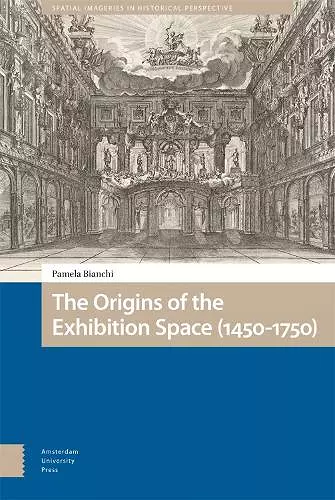The Origins of the Exhibition Space (1450-1750)
Format:Hardback
Publisher:Amsterdam University Press
Published:14th Feb '23
Should be back in stock very soon

This non-fiction hardback, "The Origins of the Exhibition Space (1450-1750)" from Pamela Bianchi, was published 14th February 2023 by Amsterdam University Press.
ISBN: 9789463728676
Dimensions: unknown
Weight: 530g
202 pages